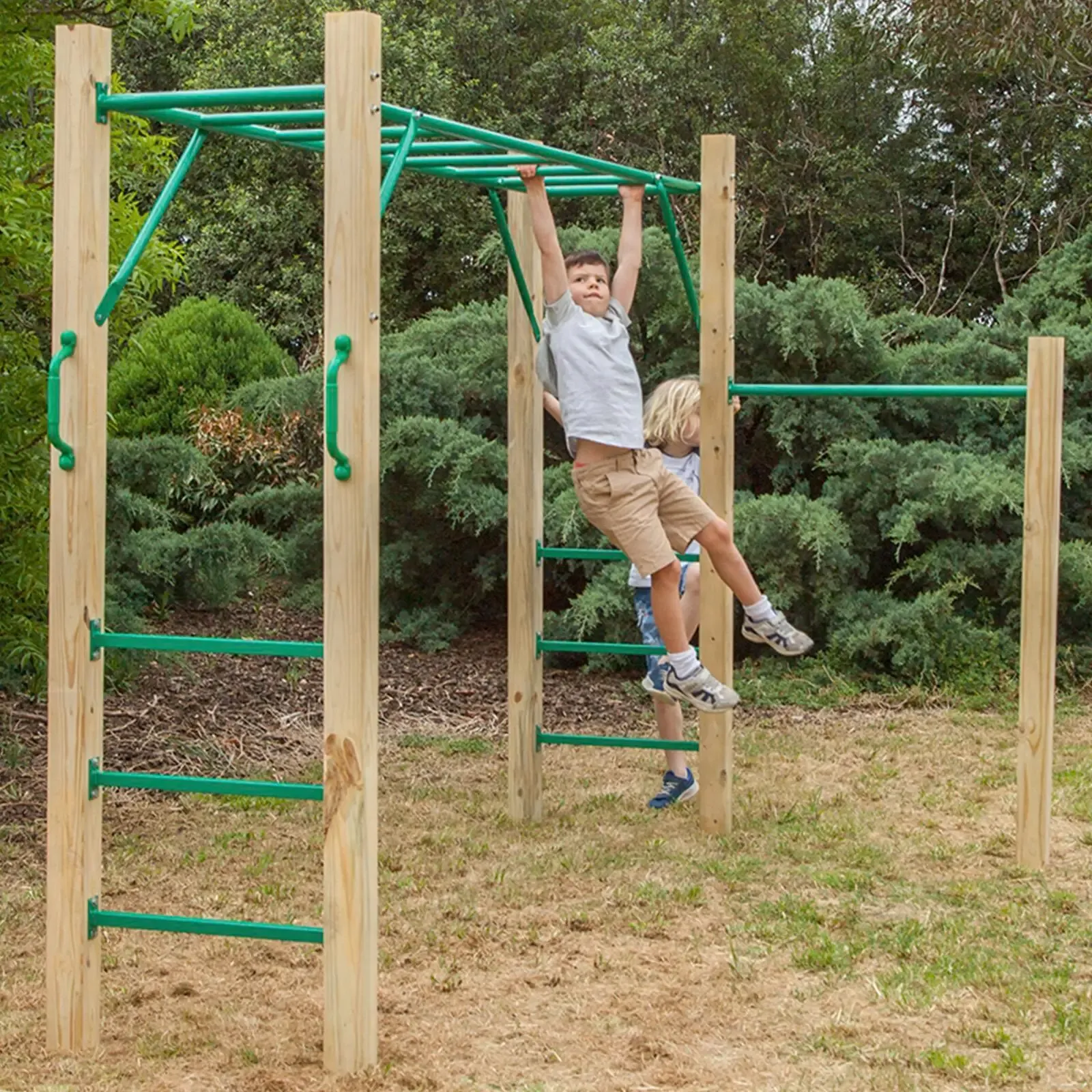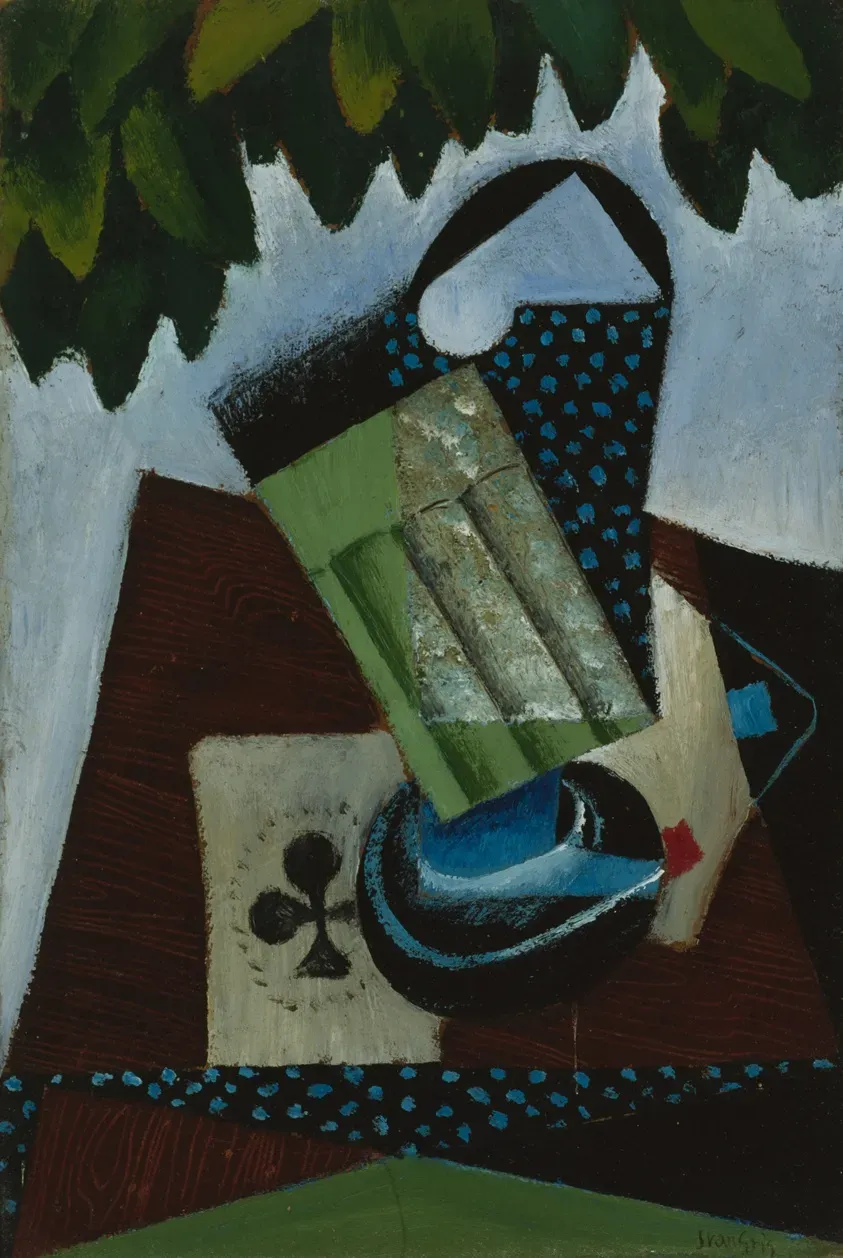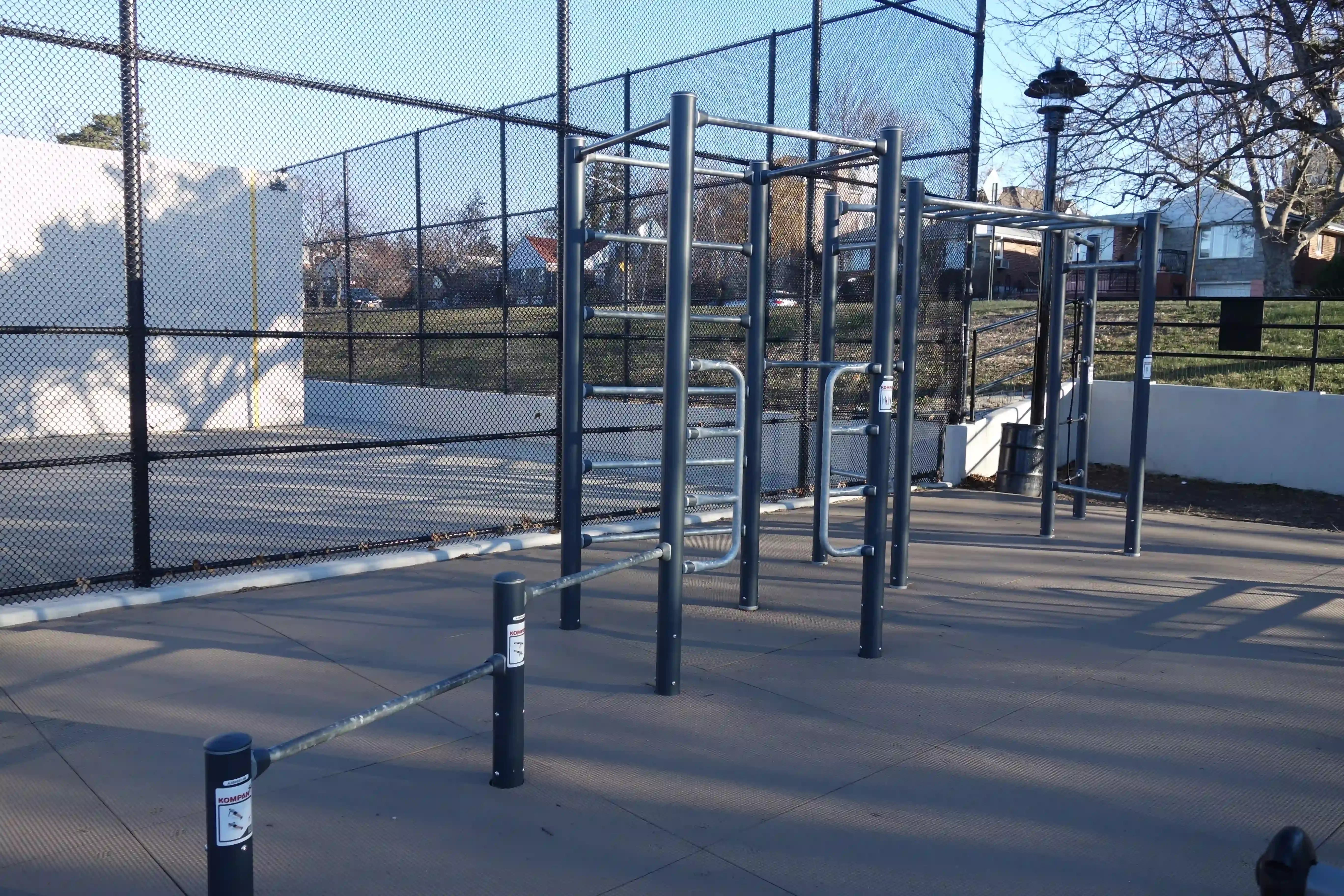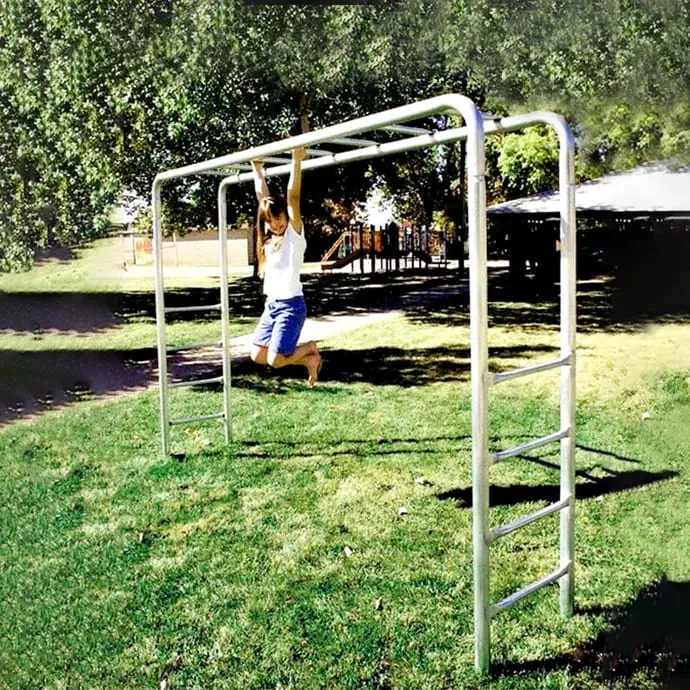Table of Contents
Remember the thrill of swinging across those metal bars, hands gripping tight, heart pounding with a mix of excitement and maybe a little fear? For generations, outdoor play equipment monkey bars have been a backyard staple, a simple structure offering big adventures. While fancy new gadgets come and go, there's something enduring about the pure, physical challenge and fun of monkey bars.
Why Outdoor Play Equipment Monkey Bars Still Rule the Backyard

Why Outdoor Play Equipment Monkey Bars Still Rule the Backyard
They're Timeless, Not Trend-Driven
Look, the backyard toy market is a wild west of blinking lights, plastic castles, and things that promise to make your kid a genius overnight. Most of it ends up in a landfill faster than you can say "assembly required." But outdoor play equipment monkey bars? They've been around forever for a reason. There's no battery to die, no software update needed, just good old-fashioned metal or wood bars waiting for a challenge. They don't need a marketing team to explain their value; kids just get it. They see a set of bars and their brains immediately go, "Can I get across that?" It's fundamental.
Serious Strength Training Disguised as Fun
Forget fancy gyms or structured classes for a second. Swinging, hanging, and pulling your body weight across a set of bars is some of the best functional fitness a kid (or let's be honest, a grown-up trying to relive their glory days) can get. It builds upper body strength, grip strength that would make a rock climber jealous, and core stability. It's not just about showing off; that kind of strength translates directly into better coordination, balance, and injury prevention in other sports and activities. Plus, they're working hard without even realizing it because they're having too much fun.
- Builds formidable grip and forearm strength.
- Develops crucial upper body muscles: back, shoulders, biceps.
- Enhances core stability and control.
- Improves hand-eye coordination and spatial awareness.
- Fosters resilience and problem-solving skills ("How do I get to the next bar?").
Fueling Imagination and Adventure
While the physical benefits are huge, the real magic of outdoor play equipment monkey bars lies in how they spark the imagination. A simple set of bars isn't just a piece of metal; it's a jungle vine, a pirate ship's rigging, a secret escape route, or the final obstacle on a ninja warrior course. Kids invent entire worlds and complex narratives around them. They aren't being passively entertained; they are the architects of their own adventures, swinging through their own epic stories. That kind of active, creative play is increasingly rare and incredibly valuable.
Picking the Right Outdoor Play Equipment Monkey Bars for Your Space and Budget
Alright, so you're sold on the idea of getting some outdoor play equipment monkey bars. Great choice. Now comes the slightly less glamorous part: figuring out what actually fits in your yard and won't require taking out a second mortgage. It’s easy to get lost in the shiny catalogs, but before you click 'buy,' measure your space. Seriously, get out the tape measure. Account for swing clearance if it's part of a larger set, and make sure there's safe landing space around it – think mulch, sand, or rubber tiles, not grandma's prize-winning rose bushes. Your budget is the other reality check. These things aren't always cheap, but there's a range from basic, standalone bars to elaborate, modular systems that can grow with your kids. Decide upfront what you're comfortable spending, because the options expand dramatically with every extra hundred bucks.
Installation and Safety Tips for Your New Outdoor Play Equipment Monkey Bars

Installation and Safety Tips for Your New Outdoor Play Equipment Monkey Bars
Read the Manual, Seriously
admit it. When you get a big box of stuff, the first thing you do is toss the manual aside and grab the tools. Don't do that with your outdoor play equipment monkey bars. These aren't IKEA bookshelves; lives (and scraped knees) are on the line. That little booklet contains critical information about site preparation, required tools, and assembly steps that are specific to your model. Trying to wing it usually results in missing parts, wobbly structures, or worse, a call to customer service you could have avoided. Find a level spot in your yard, clear out any rocks or roots, and make sure you have that safety surfacing ready to go *before* you start building. A flat, prepared surface makes everything else go smoother.
Assembly Requires Attention to Detail
Putting these things together isn't rocket science, but it requires patience and precision. Lay out all the parts first and double-check the inventory against the manual. It's annoying to get halfway done and realize you're missing a critical bolt. Follow the steps in order, tightening bolts and screws securely but not overtightening to the point of stripping threads. If the instructions say two people are needed, believe them. Trying to hold up a long, heavy bar while fumbling with a wrench is a recipe for frustration and potential injury. Once it's standing, give it a good shake test. Does anything feel loose? Are the uprights plumb (perfectly vertical)? Better to fix it now than after a kid is swinging on it.
- Confirm all parts are present before starting.
- Follow the assembly instructions step-by-step.
- Use the correct tools and tighten fasteners properly.
- Ensure uprights are level and plumb.
- Test the structure for stability before use.
- Install appropriate safety surfacing (mulch, sand, rubber).
Safety Checks Aren't Optional, They're Essential
Building the outdoor play equipment monkey bars is only half the battle. Ongoing safety is paramount. Before the first swing, and regularly afterward, inspect the entire structure. Look for loose bolts, cracked welds, splintering wood, or any signs of wear and tear. Check the ground around it – has the safety surfacing become compacted or dispersed? Top it up if needed. Make sure there are no tripping hazards nearby, like stray garden hoses or toys left lying around. Teach kids the rules: no pushing, take turns, and always land on their feet (or the safety surface). A quick check before playtime can prevent a trip to the emergency room. It's a small habit that pays off big time.
Beyond the Swing: The Real Benefits of Outdoor Play Equipment Monkey Bars

Beyond the Swing: The Real Benefits of Outdoor Play Equipment Monkey Bars
so we’ve talked about the physical gains – the grip strength, the upper body power. But the benefits of outdoor play equipment monkey bars don't stop there. These structures are silent architects of confidence and resilience. Every time a kid tries to reach the next bar, hesitates, figures out their momentum, and makes it across, they’re not just building muscle; they’re building self-efficacy. They learn to assess risk, push their limits safely, and experience the tangible reward of overcoming a physical challenge. It's a primal, deeply satisfying feeling that you just don't get swiping on a screen. Plus, navigating the bars requires focus and problem-solving – skills that are pretty handy in life, wouldn't you say?
What happens when they finally make it all the way across for the first time?
Keeping Your Outdoor Play Equipment Monkey Bars Ready for Action: Maintenance

Keeping Your Outdoor Play Equipment Monkey Bars Ready for Action: Maintenance
Routine Checks Keep the Fun Going
you've got your outdoor play equipment monkey bars installed, the kids are swinging like little primates, and life is good. But don't just walk away and forget about it. Like anything left outside battling the elements – sun, rain, snow, the occasional rogue squirrel – your monkey bars need a little love to stay safe and functional. Make it a habit to do a quick visual check regularly. Are all the bolts still tight? Is the paint or coating still intact, or are there spots showing rust? Give the bars a wipe down every now and then to remove dirt, pollen, or whatever sticky stuff kids manage to transfer onto them. Simple, consistent checks catch small problems before they become big, expensive, or dangerous ones.
Addressing Wear and Tear Before It Becomes a Hazard
Time and use will inevitably take their toll. Metal joints might start to squeak, paint can chip, and if you have a wooden frame, watch for splinters or rot. Tackle these issues promptly. A little lubricant on moving parts goes a long way. Touch up chipped paint to prevent rust from spreading – nobody wants tetanus from a monkey bar. For wooden sets, inspect for soft spots or cracks and consider sealing or staining periodically to protect against moisture damage. If you find anything seriously compromised, like a bent bar or a cracked support, don't just hope it holds. Replace the part or, if the damage is extensive, consider whether the structure is still safe for use. Ignoring these things is asking for trouble.
- Check all bolts and fasteners for tightness monthly.
- Inspect metal parts for rust and touch up paint as needed.
- Examine wooden components for splinters, cracks, or signs of rot.
- Ensure safety surfacing is adequate depth and coverage.
- Look for any bent or damaged bars or structural pieces.
- Lubricate moving parts to prevent squeaking and wear.
- Clean bars periodically to remove grime and buildup.
Still Swinging: The Last Word on Monkey Bars
So, there you have it. Outdoor play equipment monkey bars aren't some relic of a bygone era; they're a solid investment in physical activity and imaginative play. They demand effort, build strength, and offer a simple, undeniable joy that screens just can't replicate. While the latest plastic monstrosity might promise the moon, a well-chosen, properly installed set of monkey bars provides a tangible challenge and lasting fun. They require a bit of thought upfront and some occasional elbow grease for maintenance, but the payoff in scraped knees (the good kind) and triumphant swings is pretty hard to beat.